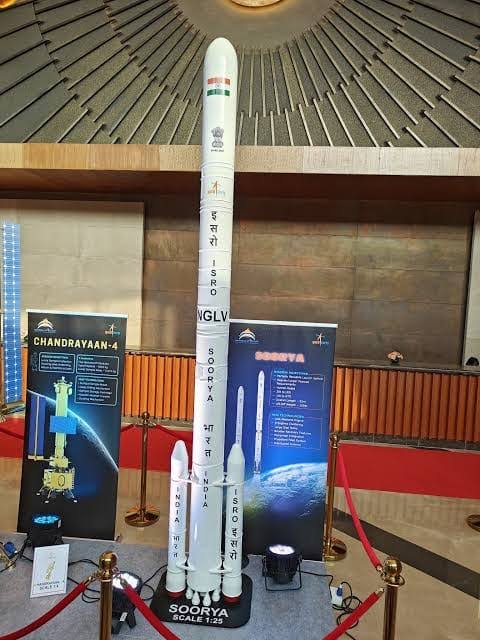NGLV, first stage to be reused 15 to 20 times by ISRO

The Next Generation Launch Vehicle (NGLV) program, of the Indian Space Research Organisation (ISRO), is going to be a major advancement in India’s space capabilities.
The NGLV configuration has been completed, and design work is currently in progress. The first stage of this rocket is designed to be reusable, with an expected reuse capability of 15 to 20 times, which aims to significantly reduce launch costs and enhance operational efficiency.
The NGLV will be a transformative step for ISRO and India’s place in space exploration, aiming for high payload capacities, cost-effective launch operations, and significant contributions to international space endeavours.
The NGLV will not only enhance ISRO’S launch capabilities but also positions it competitively with rest of the global space industry. With its focus on reusability and cost reduction, ISRO aims to lower barriers for access to space, fostering both national and commercial missions.
The NGLV project was officially approved by the Indian government in September 2024.The development phase is projected to take approximately 8 years, with completion expected by 2032.
The NGLV is intended to support a variety of missions, including launching satellites for communication, earth observation, and deep space exploration, as well as facilitating human spaceflight missions to the Bharatiya Antariksh Station and potential lunar landings by 2040.
The NGLV will have a maximum payload capacity of 30 tonnes to Low Earth Orbit (LEO), which is three times the capacity of its predecessor, the LVM3. It features a modular design that allows for bulk production and quick turnaround times.
The rocket will utilize a combination of green propulsion systems, including semi-cryogenic engines and liquid oxygen with kerosene or methane.
The first stage of the NGLV is designed for partial reusability, allowing it to be recovered after launch. The first stage will have the ability to land vertically either on land or at sea.Initial estimates suggest that the cost per kilogram for reusable configurations could be around INR 160000 , compared to approximately INR 270000 for traditional expendable models.
Reusable rockets require additional systems for landing, thermal protection, and structural reinforcement, which adds extra weight compared to expendable rockets. This can reduce the payload capacity significantly, often by about 30%.
The first stage must withstand extreme temperatures during re-entry, necessitating robust thermal protection systems that further contribute to weight.
Complex Landing Procedures: Achieving a precise landing requires advanced guidance and control systems. The rocket must execute maneuvers to slow down and land vertically, which is technically challenging and requires high reliability.
Infrastructure Requirements: The landing site must be equipped with the necessary infrastructure to support recovery operations, including inspection and refurbishment facilities.
After each flight, the reusable stage needs thorough inspection and potential repairs. This process can be time-consuming and costly, impacting turnaround times for subsequent launches.
The ongoing costs associated with maintaining reusable rockets can be significant, which may offset some of the financial benefits expected from reusability.
Reusable rockets experience significant wear from repeated launches and landings, raising concerns about their reliability over time. Ensuring that all systems can withstand multiple cycles without failure is crucial.
Each launch and recovery operation must meet stringent safety standards, particularly if human passengers are involved in future missions.




